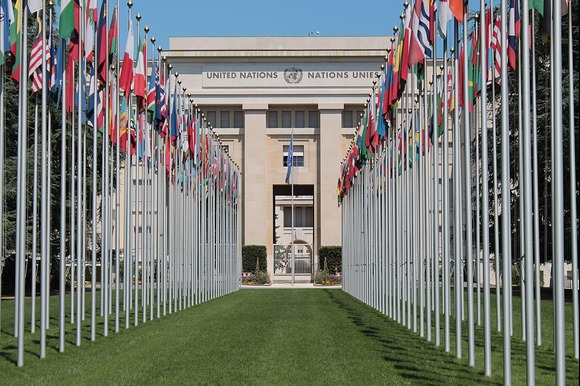
AI Generated
Women make up almost half of the world’s population, but their contribution to the measured economic activity, growth, and well-being is far below its actual potential, with grave macroeconomic repercussions. Despite the substantial progression in recent decades, labor markets throughout the world remain divided along gender lines, and progress toward gender equality appears to be very slow, if not hindered.
Evidence shows that female labor force participation has remained lower than male participation. Women account for most unpaid work; when women are employed in paid work, they are over-represented in the informal sector. They also face noteworthy wage differentials in comparison to their male counterparts. In many countries, distortions and discrimination in the labor market limit women’s options for paid work, and female representation in senior positions and entrepreneurship consequently remains low.
It is now a known fact that the challenges of growth, creating employment opportunities, and inclusiveness are closely intertwined. Nonetheless, growth and stability are essential to give women the opportunities they need; in contrast, women’s participation in the labor market is also a part of the growth and stability equation. To be specific, in rapidly aging economies, higher female labor force participation can enhance growth by addressing the impact of a shrinking workforce. Better opportunities for women can also contribute to broader economic development in developing economies, for instance through higher levels of school enrollment for girls.
If we investigate the social fabric of developing and least developed countries, we will find women among the vulnerable segments of society, calling for their political and economic empowerment. However, women’s political empowerment is not a goal, but it is an instrument in stimulating the society for political and social empowerment on the aggregate level, which would further stimulate the overall development of society.
In this context, the concept of ‘gender equality’ has over time acquired central character in social sciences, as it considers a fundamental and strategic principle in any development policy. These policies stress the need to ensure equal opportunity in the progressions of human development as a fundamental element for realizing equitable and sustainable development, and growth for all. Gender equality refers to the equal rights, responsibilities and opportunities for women and men, girls and boys. Equality does not mean that women and men will become the same but that women’s and men’s rights, responsibilities and opportunities will not depend on their gender orientation. It implies that the interests, needs and priorities of both women and men are taken into consideration. Gender equality is not a women’s issue but should concern and fully engage men too, alongside women. Equality between women and men is a precondition for, and indicator of, sustainable and inclusive development.
To realize gender equality, women’s empowerment naturally comes into play. The question arises, whether the women empowerment actually means?
The United Nations (UN) defines women’s empowerment in five components:
- Women’s sense of self-worth
- Their right to have and determine choices
- Their right to have access to opportunities and resources
- Their right to have the power to control their own lives, both within and outside the home
- Their ability to influence the direction of social change to create more just social and economic order, nationally and internationally.
All the factors are interlinked, but the most important of these or the deriving factor is women’s right to have access to opportunities and resources.
Why the Women Empowerment is so Necessary
The Amartya Sen’s ‘Capability Approach’ (a famous Development Economist from India) ‘’ makes a clear distinction between ‘achievement’ and ‘freedom’ and outlines freedom as more significant than achievement. He opines that between ‘freedom to choose’ and bringing about the ‘achievements’; one has ‘reason to value’ in the former, and in the latter approach a person realizes one’s own goals and values and opts for ‘the reason to pursue’. He also explains the idea of well-being in the same pattern. According to Sen well-being is not the quality of the life an individual is living based on the interrelated beings and doings one realizes, but the freedom to achieve the beings and doings constitutive of one’s well-being. The implicit message this approach sketch is that control over resources is more important than access to resources. Basically, ‘control freedom’ can achieve objectives by making influential decisions and directly controlling the levers of change, is the most robust form of freedom.
For example, a woman who lives in a nice house with plenty to eat and nice clothes to wear may not be free to choose how to dress or to invite others to her home for a meal. She may even deny access to these resources upon the death of her husband. Such a woman has (some) access to resources, but not control over them. The concept can also explain ‘ability to function’. Sen argues that having a bicycle may be important, but knowing how to ride a bicycle is much more important. Bottom line is that women get lesser chances for the conversion of resources into capabilities to function effectively.
Hence, the connection between women’s economic empowerment has been proven to be critical to economic growth and stability, but the share of women in the labor force has stagnated for two decades and significant structural and cultural barriers continue to inhibit women’s participation in the economy. The issue was on the policy radar for long, but the governments started to become more interested in this issue until recently, only when the characterization of women’s labor force participation started to be rightly portrayed as a driver of growth.
However, in Pakistan, where women are almost half the population, women’s inclusion in the economic domain is still a challenge. The sixth Population and Housing Census held in 2017 reveal Pakistan’s population has increased by 57 percent, from 132.3 million in 1998 to 207.7 million. The Census also shows that women make up 49 percent of the total population.
The country has also adopted a number of key international commitments to gender equality and women’s human rights – the Universal Declaration of Human Rights, Beijing Platform for Action, the Convention on the Elimination of all forms of Discrimination Against Women, and the Sustainable Development Goals. Despite these commitments, Pakistan’s ranking for gender equality remains one of the lowest in the world.
According to the World Bank data for 2019, only 24% of Pakistani women above the age of 15 are actively involved in the labor force. In contrast, the figure for men in Pakistan stands at 81%. Even those parts of the labor force are largely in the informal sector, receiving low pay and with few legal protections.
Globally, Pakistan is ahead of only 15 countries female labor force participation rate. The deeper underlying causes of this phenomenon can attribute to the cultural norms that we do not challenge daily. Although women bear the brunt of these norms in their daily lives and accept them, it is hard to quantify their real cost to our society.
Given the circumstances and the road-blocks due to structural issues and exogenous factors for economic revival, we need to imagine innovative ideas for economic stimulation. The easiest one seems to put half of the population – the women – to work and increase productivity factor. This would result in real economic growth instead of a bubble economy. The road ahead is bumpy, though we have to start somewhere.



